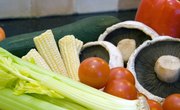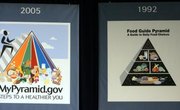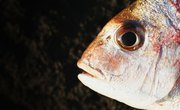When Michelle Obama launched her childhood obesity campaign in 2010, she highlighted the fact that approximately one-third of American children are overweight or obese. She also revealed that the rates of child obesity have tripled over the last 30 years. The food industry, advertisers, schools and parents all have their part to play in eliminating child obesity, but students also need education about nutrition in order to make sensible dietary decisions.
Food Choices
Have students study and discuss the government's My Pyramid scheme. A poster for children gives details on the main food groups, such as grains and vegetables, and the recommended daily intake. Students then keep a food diary and fill in a worksheet about their meals, breaking them down into food groups and estimating amounts in the form of ounces or cups. The students can then make food choices for the following day based on this experience.
Fast Food
Bring in a selection of menus from fast-food restaurants, such as McDonalds and KFC, and let the students choose what they would order for a meal. Have the students research the calories, fat content and vitamins contained in the meal. Students could then research the nutritional value of their school lunches and compare the results. It could uncover some interesting issues, such as how a supposed healthy option contains more fat than fast food. Have students discuss the results.
Comparisons
Have students research a "typical" main meal in other countries and compare them for nutritional value and balance. For instance, one group could break down a British roast beef dinner into food groups, another could focus on a stir-fry chicken dish from China, and another group could look into a chicken korma curry from India. A discussion on which meal is the most nutritious could follow. This activity would also lend itself to graphs and pie charts, breaking down each meal into food groups.
Illnesses, Diseases
Have students research dietary choices in terms of the long-term effects on the body and the possibilities of illness and disease. For instance, students could look at the effects of a diet based mainly on red meats or just fruit. Groups could investigate the suggested guidelines on how much fats and sugars people should eat and research the possible consequences of consuming too much or too little.
Related Articles
References
Writer Bio
Based on the south coast of the U.K., Sally Nash has been writing since 1988. Her articles have appeared in everything from "Hairdressers Journal" to "Optician." She has also been published in national newspapers such as the "Financial Times." Nash holds a Master of Arts in creative writing from Manchester Metropolitan University.











